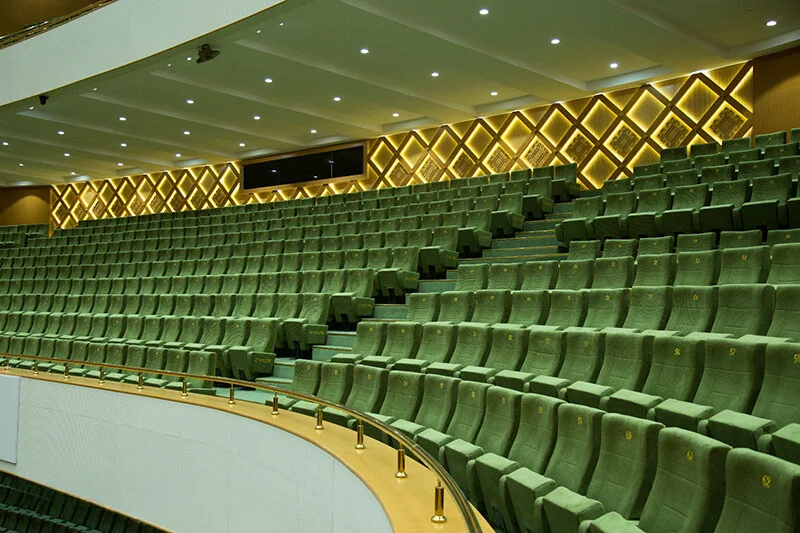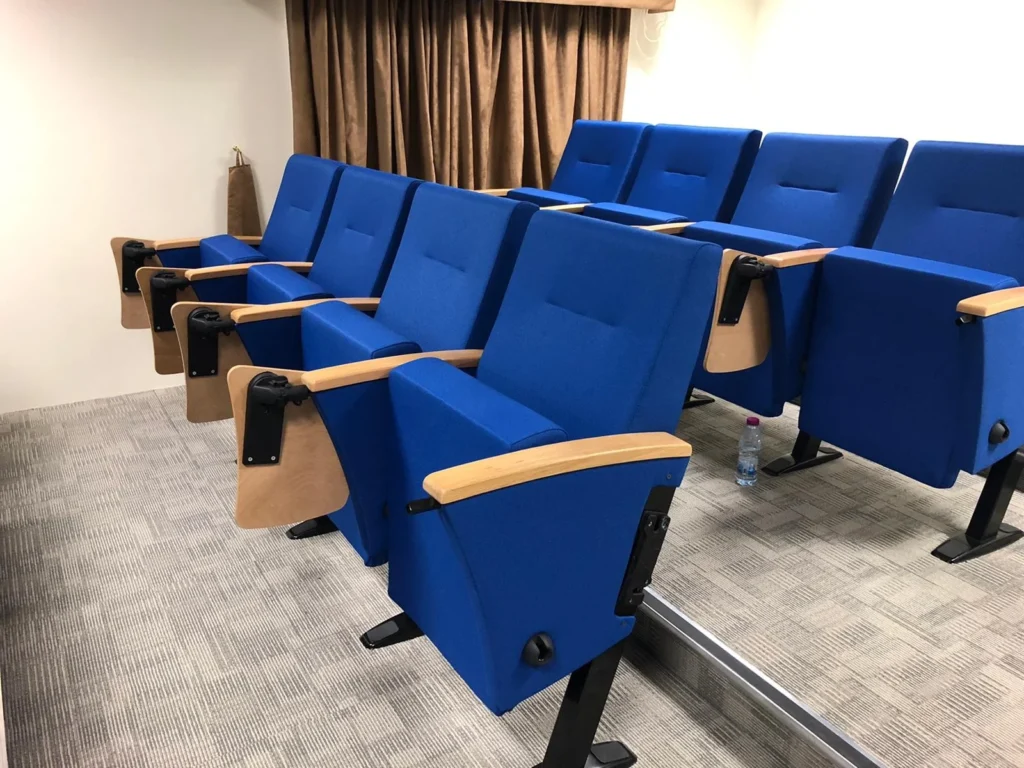Walking into a perfectly maintained auditorium, where every seat looks fresh and inviting, instantly sets a positive tone for the entire event. Professionals like venue owners, project managers, architects, and procurement specialists already know: auditorium seats maintenance is not just about appearance—it’s about long-term performance, durability, and customer satisfaction. So how can you make sure your seating system continues to perform at its best year after year? Let’s dive into the details.
Table of Contents
Auditorium Seats Maintenance: Why It Matters More Than You Think
Maintaining seating systems goes far beyond a simple cleaning routine. The structure of modern auditorium seats involves steel frames, cushioning foams, fire-retardant fabrics, and often advanced mechanisms like folding or auto-return systems. When these components are neglected, they can deteriorate faster, leading to unexpected costs or even operational downtime.

Have you ever walked into a venue and noticed squeaky or uneven chairs? That small detail can quickly undermine the overall quality perception of the entire space. Regular auditorium seats maintenance prevents these issues before they grow into serious problems, protecting both your investment and your reputation.
Structural Integrity Checks
Routine inspections of the seat frame and anchoring systems ensure safety and stability. Professionals typically recommend checking anchoring bolts every 6–12 months, especially in venues with high visitor turnover.
Upholstery and Foam Performance
Seat cushions lose density over time. By following upholstery care tips and monitoring foam compression levels, you can extend seating comfort and delay costly replacements.
Smart Approaches to Auditorium Maintenance
When we talk about auditorium maintenance, we’re really discussing the ongoing care of an entire ecosystem—floors, lighting, acoustics, and of course, the seating. But seating often carries the heaviest daily usage load.
- Did you know that even a small tear in the upholstery can spread within weeks under heavy use? Fast response with auditorium chair repair keeps the issue localized and manageable.
- Planning a maintenance schedule for chairs means less disruption. For instance, you can rotate deep-cleaning sessions by seating section rather than shutting down the entire venue.
This proactive mindset doesn’t just reduce operational headaches—it also helps extend the lifecycle of the furniture by years.
Seat Cleaning: Practical Routines That Actually Work
So, how do you handle seat cleaning in a busy venue where thousands of guests pass through weekly? The answer lies in a mix of daily care and periodic professional interventions.
Daily and Weekly Cleaning
Vacuuming dust and debris from fabric seats, or wiping down polymer and leather surfaces, should happen at least every other day. In humid climates, daily cleaning helps prevent mold development.

Professional Seat Cleaning Sessions
Hiring specialized teams for professional seat cleaning every 6–12 months ensures deep sanitation. These teams often use dry-foam or steam-cleaning machines designed specifically for large-scale seating.
But here’s the big question: do professional cleanings really make a difference in seat longevity? Absolutely. Consistent professional maintenance not only removes hidden allergens but also preserves fabric integrity, reducing fading and wear.
Chair Upkeep: The Small Fixes That Save Big Costs
Chair upkeep may sound simple, but it often determines whether you’ll face minor repairs or complete seat replacements.
- Loose screws? Tightening them during routine checks prevents mechanical stress on the frame.
- Damaged armrests? Quick fixes prevent further stress on connecting joints.
- Auto-return systems not working smoothly? Lubricating the mechanism restores function before permanent damage occurs.
Think of upkeep as the “health check-up” for your seating system. Ignoring small issues can lead to entire rows of unusable seats—a nightmare scenario for any venue manager.
Theater Seat Care: Meeting Audience Expectations
Audience members rarely think about what it takes to maintain their comfort, but professionals know that theater seat care directly impacts visitor experience. After all, an uncomfortable or broken chair can ruin a performance night for someone.
Durable Theater Seats in Practice
Investing in durable theater seats is only half the story. The other half is ensuring those seats stay durable through regular care and maintenance routines. Without that, even the highest-grade seats wear out faster.
Have you ever wondered why some theaters manage to keep their original seating in top condition for decades? The secret isn’t magic—it’s consistency in care. They follow a seat longevity guide, documenting every check, clean, and repair to track long-term performance.

Venue Maintenance Guide: Building a Long-Term Strategy
A venue maintenance guide for seating doesn’t need to be complicated. But it does need to be systematic. Here’s what a practical strategy looks like:
- Daily Care: Quick cleaning and visible checks.
- Monthly Reviews: Inspecting moving parts, anchoring, and upholstery wear.
- Biannual Deep Care: Professional cleaning, upholstery checks, and structural reinforcement if necessary.
- Annual Report: Documenting the seating system’s condition, planning replacements for severely damaged units, and updating the auditorium furniture upkeep strategy.
When procurement specialists or project managers look at these records, they can predict budget needs more accurately, minimizing surprises.
Bringing It All Together
Auditorium seats maintenance isn’t just a checklist—it’s a long-term commitment to protecting investments, supporting venue reputation, and ensuring guest comfort. From how to clean auditorium seats to setting up a maintenance schedule for chairs, every small step contributes to seat longevity and professional credibility.
So, here’s one final question: is your venue’s seating system prepared to deliver the same experience five years from now as it does today? With consistent care, the answer can confidently be yes.